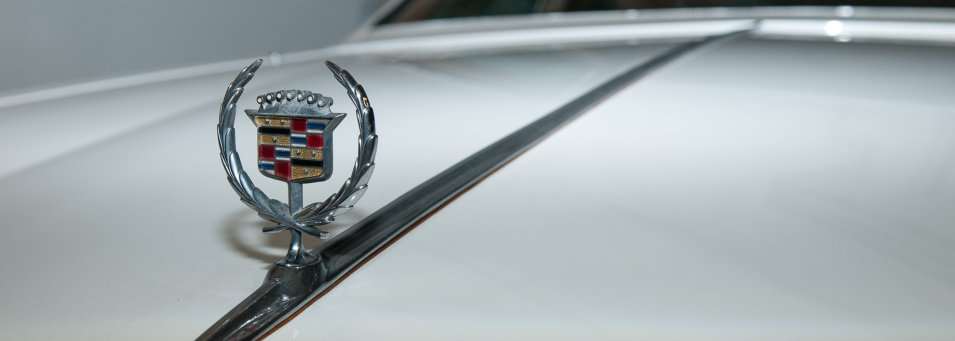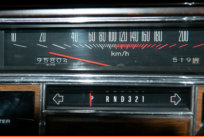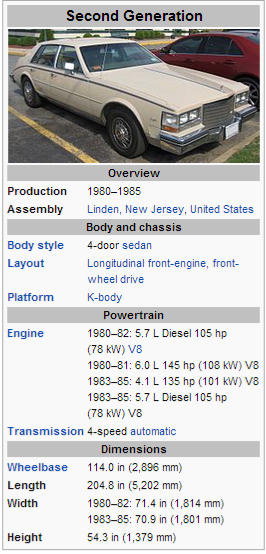












“It had no negatives”

Cadillac Seville - 83
The Cadillac Seville is a luxury car that was manufactured
by the Cadillac Motor Car Division of American automaker
General Motors from 1975 to 2004, as a smaller-sized top-
of-the-line Cadillac.
The name of "Cadillac's first small car" was selected over a revival of LaSalle and the GM design staff's preference, LaScala, primarily because, notes GM Marketing Director Gordon
design staff's preference, LaScala, primarily because, notes GM Marketing Director Gordon Horsburgh, "It had no negatives.” The initial suggestion was in fact Leland, honoring the
Horsburgh, "It had no negatives.” The initial suggestion was in fact Leland, honoring the make's founder, but it was rejected because most buyers wouldn't get the reference and
make's founder, but it was rejected because most buyers wouldn't get the reference and because Henry Leland had also founded Cadillac's rival Lincoln.
because Henry Leland had also founded Cadillac's rival Lincoln. The first-generation Seville had proved quite successful, however it failed in its primary
The first-generation Seville had proved quite successful, however it failed in its primary mission of poaching import buyers and marketing research indicated that the car was popular
mission of poaching import buyers and marketing research indicated that the car was popular with older women who wanted a Cadillac in a smaller, more maneuverable size. For the 1980
with older women who wanted a Cadillac in a smaller, more maneuverable size. For the 1980 model year, Cadillac moved the Seville to the 114 in (2,900 mm) wheelbase K-body, based on
model year, Cadillac moved the Seville to the 114 in (2,900 mm) wheelbase K-body, based on the front-wheel drive E-body Eldorado, Buick Riviera and Oldsmobile Toronado. Returning to
the front-wheel drive E-body Eldorado, Buick Riviera and Oldsmobile Toronado. Returning to some of the original concepts floated for the 1975 edition (the March 2008 issue of
some of the original concepts floated for the 1975 edition (the March 2008 issue of Collectible Automobile featured an early concept of what evolved into the downsized 1977
Collectible Automobile featured an early concept of what evolved into the downsized 1977 Cadillac DeVilles and Fleetwoods — one of the concepts which was withdrawn looks similar to
Cadillac DeVilles and Fleetwoods — one of the concepts which was withdrawn looks similar to the second-generation Seville), The rear styling was intended to invoke the look of Daimlers
the second-generation Seville), The rear styling was intended to invoke the look of Daimlers of a past era (though British Leyland were building cars with this feature even then). In the
of a past era (though British Leyland were building cars with this feature even then). In the US, the bustle-back styling was imitated by the 1982–1987 Lincoln Continental sedan, and the
US, the bustle-back styling was imitated by the 1982–1987 Lincoln Continental sedan, and the 1981–1983 Chrysler Imperial coupe.
1981–1983 Chrysler Imperial coupe. The new model, one of the last vehicles designed by GM's Bill Mitchell, featured front-wheel
The new model, one of the last vehicles designed by GM's Bill Mitchell, featured front-wheel drive and independent rear suspension. The Seville initiated features that would become
drive and independent rear suspension. The Seville initiated features that would become more traditional in later years. In 1981, "memory seats" — a feature not seen on a Cadillac
more traditional in later years. In 1981, "memory seats" — a feature not seen on a Cadillac since the Eldorado Broughams of the late 50s — became available again. This option allowed
since the Eldorado Broughams of the late 50s — became available again. This option allowed two memorized positions to be recalled at the touch of a button. Also new for 1981 was a
two memorized positions to be recalled at the touch of a button. Also new for 1981 was a digital instrument cluster. The "Cadillac Trip Computer" was a precursor to this option in
digital instrument cluster. The "Cadillac Trip Computer" was a precursor to this option in 1978. For the '81-'85 Seville and Eldorado, it was considerably less expensive, at US$200 in
1978. For the '81-'85 Seville and Eldorado, it was considerably less expensive, at US$200 in '81, and did not contain the many features of Trip Computer, just a digital speedometer and
'81, and did not contain the many features of Trip Computer, just a digital speedometer and fuel gauge. "Puncture-sealing" tires were also new for '81. In 1982, Seville offered heated
fuel gauge. "Puncture-sealing" tires were also new for '81. In 1982, Seville offered heated outside rear-view mirrors with the rear defogger option. Inside, a "Symphony Sound" stereo
outside rear-view mirrors with the rear defogger option. Inside, a "Symphony Sound" stereo cassette tape system was available. For 1983, a new "Delco/Bose" stereo cassette system was
cassette tape system was available. For 1983, a new "Delco/Bose" stereo cassette system was offered at US$895. Initially, looking like a standard Delco radio in 1983, from 1984 on it
offered at US$895. Initially, looking like a standard Delco radio in 1983, from 1984 on it featured a brushed gold-look front panel and bulbous lower interior door speaker assemblies.
featured a brushed gold-look front panel and bulbous lower interior door speaker assemblies. This was also the last year for the availability of an 8-track stereo system for Seville. On the
This was also the last year for the availability of an 8-track stereo system for Seville. On the outside, from 1983 through 1985, Seville was available with a "Full Cabriolet Roof" option,
outside, from 1983 through 1985, Seville was available with a "Full Cabriolet Roof" option, which gave Seville the look of a four-door convertible.
which gave Seville the look of a four-door convertible. In hip hop culture, this generation of Sevilles were known as "slantbacks." Sales were
In hip hop culture, this generation of Sevilles were known as "slantbacks." Sales were respectable at first, but disastrous experimentation with diesel engines ( the standard engine
respectable at first, but disastrous experimentation with diesel engines ( the standard engine in 1980 models) and the ill-fated 1981 V8-6-4 variable displacement engine (1980s technology
in 1980 models) and the ill-fated 1981 V8-6-4 variable displacement engine (1980s technology could not make it work reliably), along with poor quality control and lackluster performance
could not make it work reliably), along with poor quality control and lackluster performance from engines severely detuned to meet more stringent CAFE standards, began to erode the
from engines severely detuned to meet more stringent CAFE standards, began to erode the Seville's standing in the marketplace. A new but underpowered 4.1 liter V8 was fitted to
Seville's standing in the marketplace. A new but underpowered 4.1 liter V8 was fitted to post-1981 models. It was prone to the block becoming porous and coolant mixing with the
post-1981 models. It was prone to the block becoming porous and coolant mixing with the oil, resulting in catastrophic engine failure. Some 1981-1982 models were also fitted with an
oil, resulting in catastrophic engine failure. Some 1981-1982 models were also fitted with an optional 4.1 liter Buick V6, which was a reliable enough engine, but was not powerful enough
optional 4.1 liter Buick V6, which was a reliable enough engine, but was not powerful enough for the Seville's weight and performance was lacking.
for the Seville's weight and performance was lacking.

1983
 Engine
4.1 litres
8 cylinders
Power
135 HP
Lenght
5,2 m
Widht
1,8 m
Engine
4.1 litres
8 cylinders
Power
135 HP
Lenght
5,2 m
Widht
1,8 m
 The collections Seville has been
driven only ~80.000 kilometres. BK-
Group is the second owner of this
car.
The collections Seville has been
driven only ~80.000 kilometres. BK-
Group is the second owner of this
car.





Photos mainly by Matti Kreivilä. Historical facts and technical details of the vehicles provided by Wikipedia. Movies YouTube.






